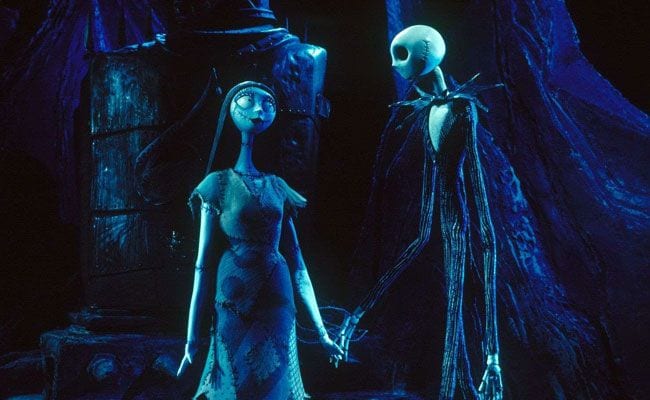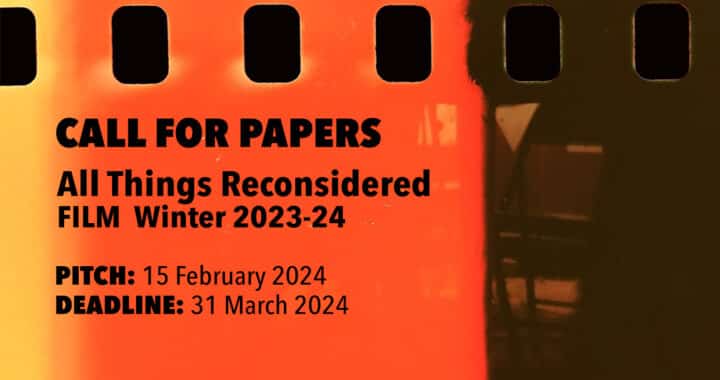Its origins can be traced to 1897 and a film called The Humpty Dumpty Circus. In this film, the technique was used to illustrate a collection of toys and stuffed animals coming to life. Famed film maestro George Melies used it for many of his films, while Willis O’Brien popularized it with efforts such as The Lost World and King Kong.
George Pal brought the concept to the kids, creating a collection of celebrated “Puppetoons” that cemented the approach as part of the family film ideal. Arthur Rankin, Jr. and Jules Bass made stop-motion animation an aesthetic given. Though they made a few feature films, their broadcast classics like Rudolph the Red-Nosed Reindeer, Santa Claus Is Comin’ to Town, and Here Comes Peter Cottontail turned an entire generation onto the then-dying artform.
Over the decades, stop-motion animation has been resurrected and rejected, and film fans are either curious about the choice or crazy about the results. At this writing, upstart production company Laika will bring The Boxtrolls to theaters. Based on Alan Snow’s Here Be Monsters!, the story centers on a young boy raised by underground dwelling creatures and his eventual reemergence as part of the “real” world. While it has its issues both narratively and in its character design, it proves that stop-motion is now a viable alternative to the more flashy and futuristic obsession with CGI.
With this in mind, we present a list of the 10 Best Stop-Motion Animated Films. While there are many films to pick from, we strategically stayed in those accessible in America at this writing. No matter, the titles here more than make up for the lack of access, beginning with a truly unknown quantity.
10. Willy McBean and his Magic Machine (1965) Director: Arthur Rankin Jr.
The team of Rankin and Bass are best known for their television holiday hits. On the other hand, their films are more cult classics than certifiable gems. Willy McBean and his Magic Machine centers on a young boy who builds a faulty time machine to stop a wacky mad scientist from altering history. He ends up interacting with General Custer, Buffalo Bill Cody, Christopher Columbus, and King Arthur, with stops in Ancient Egypt, Rome, and prehistoric times. While the emphasis on education is obvious (the duo attempted to make the past “cool” for the kids), the technique is terrific.
9. The Puppetoon Movie (1987) Director: Arnold Leibovit
George Pal more or less made stop-motion acceptable to the ankle-biter crowd, and here is the reason why. A compendium of short films illustrating the man’s painstaking technique (he would build different versions of each character, interchanging them to recreate form and movement), many suffer from a very narrow view of minorities and accompanying stereotypes. Those era-arguable issues noted, Pal’s perfectionism is displayed in every frame. Sometimes, it’s impossible to imagine that these films were made by a human being, not a precision calculating computer. Coraline, below, borrowed a bunch from the Puppetoons.
8. ParaNorman (2012) Director: Chris Butler
Laika gets the first of two shout-outs here, and the reason is obvious. Unlike present-day kid video efforts, this studio understands that, sometimes, a family film needs to be scary and just a bit serious. ParaNorman tells the story of a boy whose obsession with zombies comes into play when his small town is overrun with reanimated corpses. Granted, these are not Walking Dead-level gore-fiends, but ParaNorman still manages to make these monsters into effective fear factors. Even better, its focus on misfits means that it avoids many of the issues raised by stories like this and instead argues for being true to yourself.
7. A Town Called Panic (2009) Director: Stéphane Aubier
It started out as a joke, crude five-minute shorts made with cheap dime store toys. After a run of 20 episodes, a feature film was proposed. A Town Called Panic‘s story centers on the main characters – Horse (a horse), Cowboy (a cowboy figurine), and Indian (a toy statue) – planning for a birthday celebration. Unfortunately, instead of the number they needed, they mistakenly ordered 50 million bricks to build a barbeque. As much a commentary on the stop-motion format as a hilarious send-up of the Saturday morning formula, there’s a bit of Pee-Wee’s Playhouse in this jolly collaboration between Belgium, Luxembourg, and France.
6. Fantastic Planet (1973) Director: René Laloux
Some may see this entry and shout, “NO!” After all, look at the trailer and see if you can find the flaw. Did you say that this is a traditionally animated sci-fi allegory? Well, you’re wrong. Apparently, we are watching 2D pen and ink drawings carefully positioned and photographed using the old-school method. Think South Park’s cut-out strategy without the crude, rude satire. The result is something otherworldly, which matched the Bacon and Dali-inspired designs perfectly. Some say Fantastic Planet is nothing more than a series of fever dreams devised for the drug-fueled audience member, but it’s also a reminder that stop-motion isn’t always puppets or claymation.
5. Mad Monster Party? (1967) Director: Jules Bass
Rankin and Bass team up again; this time, Mad Monster Party?‘s premise is perfectly encapsulated in the technique. The idea here is that the classic creatures from Universal – Frankenstein, Dracula, Wolfman, Quasimodo, the Invisible Man, Dr. Jekyll and Mr. Hyde, and the Creature from the Black Lagoon – get together to celebrate a mad scientist’s discovery of the secret of total destruction. Sadly, the nephew of the insane madman shows up and starts causing trouble. With the voice talents of Phyllis Diller and Boris Karloff, there is a real swinging ’60s vibe to the production. There’s even a set of skeletons mocking the Beatles.
4. Wallace and Gromit’s The Curse of the Were-Rabbit (2005) Director: Steve Box
Perhaps the greatest modern purveyors of the art form, Aardman Animations introduced these characters in the late ’80s. A slew of Oscars followed. When a feature film was suggested, the horror route was agreed upon, and we ended up with Wallace and Gromit’s The Curse of the Were-Rabbit, a hilarious spoof featuring our naive inventor and his smarter-than-he-looks dog dealing with a carrot-stealing monster. They have to protect their populace – and their prized crops – before the Giant Vegetable Competition takes place. Naturally, we end up with brilliantly choreographed action sequences (a W&G given) and lots of nutty English humor.
3. Fantastic Mr. Fox (2009) Director Wes Anderson
Wes Anderson fell in love with stop-motion animation during the filming of The Life Aquatic with Steve Zissou, enjoying his collaboration with Henry Selick so much that he decided to try his hand at the format. The result was this amazing adaptation of the Roald Dahl children’s book. With some help from Mark Gustafson, Anderson used Steiff-like creatures and some interesting natural backdrops to highlight his inventive approach. There are times when the characters in Fantastic Mr. Fox resemble life-like versions of their critter counterparts. The brilliant voice work of George Clooney, Meryl Streep, and Bill Murray sealed the deal.
2. Coraline (2009) Director: Henry Selick
Henry Selick had signed on to help Wes Anderson realize his Fantastic Mr. Fox aims when the studio supporting the project collapsed. He joined Laika to bring Neil Gaiman’s clever coming-of-age tale to life. One of the best films ever made via the stop-motion technique, Selick showed his strong suit, that is, George Pal-like precision without the aid of computers or other modern technologies. But there is more to this incredibly creative talent than lockstep meticulousness. Coraline‘s characterizations and attention to narrative are just as effective, if not more so, than the visual panache.
1. The Nightmare Before Christmas (1993) Director: Henry Selick
Selik again with a film that truly announced the return of stop-motion animation. Story creator and producer Tim Burton loved the technique, using it for his famous short film Vincent. When Disney okayed The Nightmare Before Christmas, they hoped for a hit. They didn’t get one (it did poorly at the box office). What they did get, however, was a masterpiece of stop-motion animation, a compelling combination of genres, tropes, traditions, and holiday givens wrapped up in Burton’s own warped worldview. Today, The Nightmare Before Christmas is part of the filmmaker’s acclaimed canon. Oddly enough, Selick seems to get little of the credit for it that he so richly deserves.


![Call for Papers: All Things Reconsidered [MUSIC] May-August 2024](https://www.popmatters.com/wp-content/uploads/2024/04/all-things-reconsidered-call-music-may-2024-720x380.jpg)



